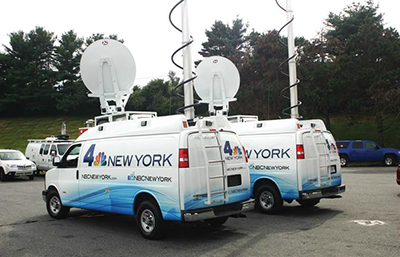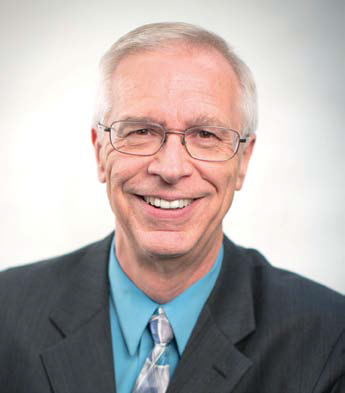BAS Spectrum Threats Escalate

NEW YORK—A year ago, the conversation concerning the future of the Broadcast Auxiliary Service centered around how the FCC was opening up the BAS spectrum for use by wireless providers, and how that might create interference.
As a result of diligent efforts on the part of several broadcast technology groups and a refocus by many broadcasters to protect their allocated spectrum, the interference to BAS feared by many never materialized. There is now, however, a new threat to broadcasters’ use of the BAS spectrum that will almost surely guarantee a negative effect on all users.
The BAS bands at Chs. 2, 7 & 13 GHz are used by broadcasters for electronic newsgathering, station-to-transmitter links and intercity relays. For live news coverage they have been the essential link for transmitting video since the 1960s. Stations rely on them to provide dedicated high-quality links to cover everything from breaking news, to major events and disasters.
Earlier this year CTIA-The Wireless Association asked the FCC to reallocate spectrum space in the BAS from broadcasters to the wireless industry, and they aren’t the only ones proposing this. The Department of Defense, after its initial move into BAS, is also looking for more access to the spectrum, (although Bloomberg has reported that the DoD is close to a resolution with broadcasters). But either way, none of this bodes well for the industry.
NOT AGAIN
“The loss of the top 15 MHz in the TV BAS band in the CTIA proposal would mean going from seven 12 MHz wide channels to seven 10 MHz wide channels,” said Dane Ericksen, co-chair of Engineers for the Integrity of Broadcast Auxiliary Services Spectrum.
Along with losing the upper and lower Data Return Links, Ericksen’s concern is that the 10 MHz channels will create obstacles for broadcasters who will need to once again replace equipment to accommodate a new frequency range. This would also mean bad news for markets that do split channel operations in the current 12 MHz space as it would eliminate that option.
“In heavily congested markets like Washington D.C., taking away any ENG spectrum will present a hardship,” points out Joe Snelson, president of the Society of Broadcast Engineers.
The professional video industry's #1 source for news, trends and product and tech information. Sign up below.
Broadcasters’ primary lobbying group has also voiced its concern to lawmakers.

Joe Snelson, SBE President “NAB remains concerned that lifeline emergency news coverage of local broadcasters could be threatened by the continued ‘cherry picking’ of spectrum by wireless industry advocates,” said Dennis Wharton, executive vice president of communications for the National Association of Broadcasters.
The concerns of broadcasters and the public at large are valid. The use of spectrum for live news coverage can be justified by not only its benefits, but its track record of dependable service. There are no new technologies that can replace what broadcasters have used reliably for over half a century.
In Washington D.C., the use of the seven ENG channels is coordinated by the regional SBE frequency coordinator, who has numerous news agencies that can request access, Snelson said. Like other high-density news markets like New York and Los Angeles, the BAS spectrum is used daily. In recent years news organizations across the country have started to supplement and expand their coverage with cellular-based IP video solutions. These systems work by bonding several cellular radios together to get the bandwidth necessary for quality live video.
The tradeoff for using these systems is quality, latency and dependence on the availability of cellular.
“Bonded cellular works in SD fine, but not in every market,” said Harvey Arnold, corporate director of engineering for the Sinclair Broadcast Group. He said that the variable latency inherent with cellular connections makes them impractical with IFB. His station group’s experiences with cellular ENG systems vary by market; it works well for some but not so well for others. “Many times we go to a major event venue and the systems work, but on the day of the event you can’t get a connection through,” he said.
The concern of broadcasters is that during major events or disasters, cellular service is not always available. “During the Boston Marathon bombing coverage, cellular services were crippled during the aftermath, which meant 2 GHz was the only way stations could get their coverage out,” Snelson said.
Both broadcast cellular and microwave manufacturers have been aware of this concern and limitation, and in one case have teamed up to offer solutions. Integrated Microwave Technologies and IP video provider Dejero have developed the Dejero + Nucomm Connect Live transmitter, a system that allows ENG video feeds via cellular or 2 GHz to maximize flexibility in utilizing available services.
Broadcasters often use the new cellular ‘backpack’ units to help get more content from the field, but consider their use supplemental. “These systems are just another tool in our toolbox,” said Snelson who added he does not see them being reliable enough to take the place of a 2 GHz microwave radio.
Paul Shen, CEO of TVU Networks acknowledges such concerns, responding that mobile ENG solutions are complicated.
“[Mobile ENG] integrates a school of technologies such as encoding, network management, network traffic management, synchronization and error corrections and not all of them are implemented the same way,” he said. “There are many tools for IP-based ENG, including microwave, satellite and cellular; all of them have them own certain limitations. Aggregating all those various forms of transmission into a single system increases the probability of a successful transmission. That is why a technology that can aggregate multiple means of transmission, and do it seamlessly to the user, is crucial to broadcasters.”
‘MAD’ INTERFERENCE
Whether narrowing the existing 2 GHz channels or eliminating some, both scenarios will strongly impact broadcasters. This most recent proposal comes alongside the DoD wanting to relocate some of its systems into BAS. Sharing the spectrum with business and military puts at risk broadcasters’ confident use of the spectrum and may actually make it as unreliable as cell service.
When licensed broadcast entities all share the same or adjacent spectrum, they are subject to FCC regulations and have a mutual interest in avoiding interference. In a ‘Cold War’-styled term coined by EIBASS’s Ericksen, “‘mutually assured destructive’ interference creates the compelling incentive for broadcasters to cooperate out of mutual self-interest.” This means that broadcasters take efforts not to step on one another’s signals, but enter a non-regulated entity like the DoD or a new business model like cellular, and those same safeguards will not apply anymore.
“We get nervous when the FCC talks about sharing spectrum,” said Sinclair’s Arnold. Technically he sees few issues with sharing, as they currently do with other broadcasters, but the transient nature of where ENG transmissions emanate from pose specific challenges to successfully integrating with other industries.
When the CTIA proposed using the 2 GHz BAS spectrum space for broadband, all three broadcast organizations pushed back. “CTIA believes that the commission should closely consider spectrum from the Broadcast Auxiliary Service as the most effective candidate band,” according to a CTIA letter to the FCC.
This recommendation caused great concern to broadcasters. Recently the CTIA has started to back away from the strength of their language, but the knowledge that powerful lobbying groups are looking so closely at such a precious resource will continue to worry broadcasters.

